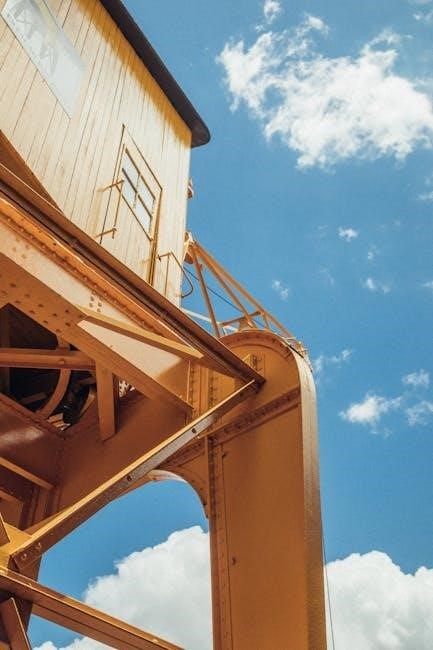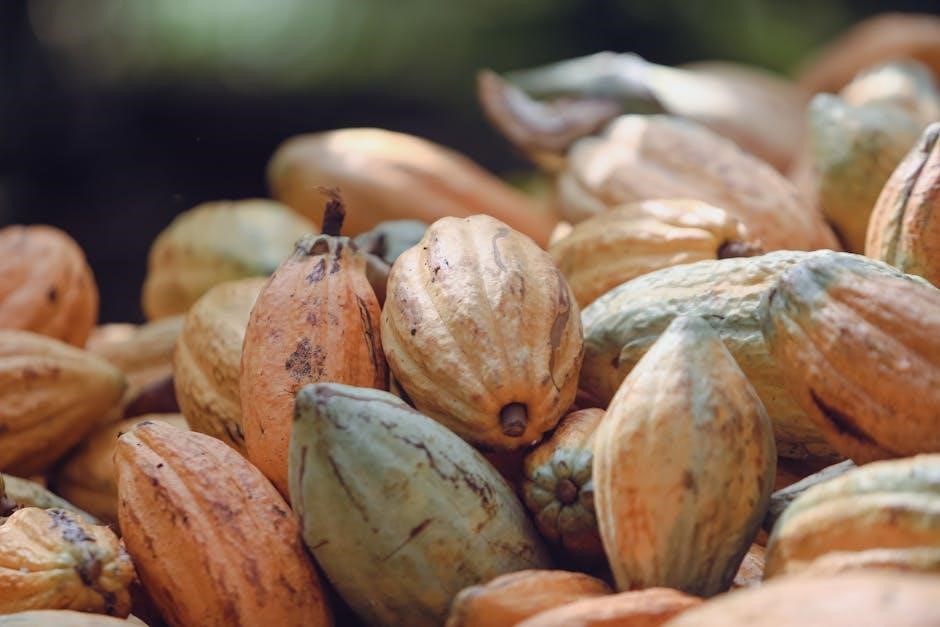Embrace sustainable living! Home composting transforms kitchen and yard waste into nutrient-rich soil, reducing landfill impact and enriching your garden naturally.
What is Composting?
Composting is nature’s recycling process, accelerated and managed by us. Essentially, it’s the decomposition of organic matter – things that were once living – into a dark, crumbly, earthy-smelling substance called humus. This humus is incredibly beneficial for soil health, acting as a natural fertilizer and soil conditioner.
Think of a forest floor; leaves, twigs, and fallen fruit break down over time, enriching the soil below. Composting mimics this natural cycle, but in a controlled environment. We provide the ideal conditions for microorganisms – bacteria, fungi, and others – to thrive and break down the organic materials.
The result isn’t just waste reduction; it’s the creation of a valuable resource that improves soil structure, water retention, and provides essential nutrients for plant growth. It’s a win-win for both your garden and the environment!
Why Compost at Home? (Benefits)
Composting offers a wealth of advantages! Firstly, it significantly reduces household waste sent to landfills, lessening environmental impact and conserving valuable landfill space. Secondly, compost acts as a natural soil amendment, improving its structure, aeration, and water retention – reducing your need for chemical fertilizers.
Furthermore, compost enriches the soil with essential nutrients, promoting healthier plant growth and increased yields in your garden. It also suppresses plant diseases and pests, creating a more resilient ecosystem. Economically, composting saves money on fertilizer and soil purchases.
Finally, it’s a deeply satisfying way to connect with nature and contribute to a more sustainable lifestyle, fostering a healthier planet for future generations. It’s a small change with a big impact!

The Science Behind Composting
Decomposition is key! Composting relies on natural biological processes, driven by microorganisms, to break down organic matter into valuable humus.
The Role of Microorganisms
Invisible workers fuel the process! A thriving compost pile isn’t just a heap of decaying matter; it’s a bustling ecosystem teeming with microscopic life. Bacteria, fungi, and other microorganisms are the primary decomposers, diligently breaking down organic materials. Initially, mesophilic bacteria dominate, initiating the breakdown with moderate temperatures.
As decomposition accelerates, thermophilic bacteria take over, generating significant heat – a crucial step for killing pathogens and weed seeds. Fungi play a vital role in breaking down tougher materials like wood and paper. Actinomycetes contribute to the final stages, creating a sweet, earthy smell. These organisms require oxygen, moisture, and a balanced carbon-to-nitrogen ratio to function optimally, highlighting the importance of proper compost management.
Carbon to Nitrogen Ratio (The “Browns” and “Greens”)
Balancing the recipe for success! Microorganisms need both carbon and nitrogen to thrive, but in a specific ratio. “Browns” – carbon-rich materials like dried leaves, twigs, and cardboard – provide energy. “Greens” – nitrogen-rich materials like grass clippings, kitchen scraps, and coffee grounds – provide protein for microbial growth.
The ideal carbon-to-nitrogen (C:N) ratio is around 25:1 to 30:1. Too much carbon slows decomposition, while too much nitrogen can create a smelly, anaerobic environment. Aim for a mix of roughly two parts “browns” to one part “greens” by volume. This isn’t an exact science, but understanding this balance is key to a healthy, efficient compost pile, ensuring rapid breakdown and nutrient-rich compost.

Choosing a Composting Method
Select the best fit! Several composting methods exist, each with unique advantages and disadvantages, depending on space, time, and desired effort levels.
Bin Composting: Pros and Cons
Bin composting is a popular and straightforward method, utilizing a contained structure – often plastic or wood – to hold composting materials. Pros include relatively easy setup, good temperature retention for faster decomposition, and a tidier appearance compared to open piles. Bins help deter pests and contain odors, making them suitable for smaller yards or more visible locations.
However, cons exist. Bins require manual turning for aeration, which can be physically demanding. They may also be slower to decompose materials than tumbler systems; Proper bin size is crucial; too small, and it won’t heat up effectively; too large, and turning becomes difficult. Cost can vary significantly depending on the bin’s material and features, ranging from DIY options to commercially-made models.
Tumbler Composting: Pros and Cons
Tumbler composters offer a convenient and efficient composting experience. These rotating bins make turning the compost pile effortless, significantly speeding up decomposition. Pros include faster composting times, improved aeration, and enhanced pest control due to the enclosed design. They also require less physical effort than traditional bin composting, making them ideal for individuals with limited mobility.
However, cons should be considered. Tumblers can be more expensive upfront than static bins. They often have a smaller capacity, requiring more frequent additions of materials. Maintaining the correct moisture balance is crucial, as tumblers can dry out quickly. Overfilling can hinder proper tumbling and aeration. Some models may be difficult to assemble or move once filled with compost.

Vermicomposting (Worm Composting): An Overview
Vermicomposting, or worm composting, utilizes the power of earthworms – specifically red wigglers – to break down organic waste. This method is exceptionally well-suited for indoor composting, even in apartments, due to its odor-free nature when managed correctly. Worms consume food scraps, producing nutrient-rich castings, often called “black gold,” which are an excellent soil amendment.
Benefits include a small footprint, minimal space requirements, and the production of a highly valuable fertilizer. However, vermicomposting requires some initial setup and ongoing maintenance. Worms need a specific environment – proper bedding, moisture levels, and temperature control. Certain foods, like citrus and onions, should be avoided. Careful monitoring is needed to prevent overfeeding or pest infestations.

Setting Up Your Compost System
Begin your composting journey! Select a suitable location and gather essential tools for efficient decomposition, ensuring a thriving and productive compost pile.
Location, Location, Location!
Choosing the right spot is crucial! Ideally, your compost pile should be situated in a well-drained area, receiving partial sunlight. Direct sunlight can dry out the pile too quickly, hindering decomposition, while full shade might slow the process. Accessibility is also key – you’ll be visiting your compost regularly, so choose a location convenient to both your kitchen and garden;
Consider proximity to a water source for easy moisture control. A level surface is preferred to prevent runoff. Avoid placing the compost directly on concrete or asphalt, as this can impede drainage and beneficial microbial activity. If space is limited, even a small, discreet corner can work effectively. Remember to check local ordinances regarding composting regulations before establishing your system!
Essential Composting Tools
Getting equipped is simple! While composting doesn’t require a lot of fancy gear, a few tools will make the process significantly easier. A sturdy pitchfork or turning tool is essential for aerating the pile, ensuring proper decomposition. A compost thermometer helps monitor internal temperatures, indicating activity levels.
A pair of gardening gloves protects your hands, and a bucket or container simplifies transporting kitchen scraps. For finer materials, a garden fork can be useful. Depending on your chosen method, you might also need a compost bin or tumbler. Don’t underestimate the value of a good watering can for maintaining optimal moisture levels. These tools will empower you to create compost efficiently!

What to Compost (The “Yes” List)
Unlock composting potential! A wide array of organic materials can be composted, transforming waste into valuable garden nourishment and soil amendment easily.
Kitchen Scraps: Fruits, Vegetables, Coffee Grounds
Your kitchen is a composting goldmine! Fruit and vegetable scraps – peels, cores, ends, and even slightly spoiled produce – are excellent “green” additions to your compost pile. These materials break down quickly, providing valuable nitrogen. Don’t forget coffee grounds and tea bags (remove any staples!), which add nitrogen and improve the compost’s structure. Eggshells are also fantastic, offering calcium and helping to neutralize acidity.
However, avoid large quantities of citrus peels, as they can lower the pH too much. Remember to chop larger scraps into smaller pieces to speed up decomposition. Regularly adding kitchen scraps keeps your compost pile active and thriving, turning everyday waste into a gardener’s best friend. It’s a simple step towards a more sustainable lifestyle!
Yard Waste: Leaves, Grass Clippings, Twigs
Harness the power of your garden! Yard waste forms the “brown” backbone of a successful compost pile. Dried leaves are a fantastic carbon source, breaking down slowly and providing essential structure. Grass clippings, rich in nitrogen, decompose rapidly, but use them in moderation to avoid matting. Small twigs and branches add aeration and help prevent compaction.
Shredding leaves and twigs before adding them significantly speeds up the composting process. Avoid using diseased plant material, as it could spread problems when you use the finished compost. A good mix of yard waste provides the carbon-to-nitrogen balance needed for efficient decomposition, creating a rich, dark compost for your garden’s benefit.
Paper Products: Cardboard, Newspaper
Recycle within your compost! Paper products, specifically cardboard and newspaper, are excellent “brown” materials, providing crucial carbon for a balanced compost pile. Shredded newspaper breaks down quickly and adds bulk, improving aeration. Cardboard, especially corrugated cardboard, decomposes more slowly but provides excellent structure.
Remove any plastic tape or labels from cardboard before adding it to your compost. Avoid glossy or colored paper, as these may contain harmful chemicals. Paper products help absorb excess moisture and create air pockets, accelerating decomposition. They are a readily available resource, making composting more accessible and reducing landfill waste.
Meat, Dairy, and Oily Foods
Generally avoid these in home composting! While technically compostable, meat, dairy products, and oily foods pose significant challenges for most home compost setups. They attract pests like rodents and flies, creating unpleasant odors and potentially spreading disease. These materials decompose slowly and can create anaerobic conditions, leading to a smelly, unhealthy pile.
If you have a well-managed, hot composting system – consistently reaching temperatures above 131°F (55°C) – small amounts may be composted. However, for typical backyard piles, it’s best to dispose of these items in the trash or explore specialized composting methods like Bokashi, designed for all food waste. Prioritize a pest-free and odor-free composting experience!
Diseased Plants and Weeds
Exercise caution with these additions! Diseased plants and weeds should generally be avoided in your home compost pile, unless you achieve consistently high temperatures. Many plant diseases and weed seeds can survive the typical composting process, potentially re-infecting your garden when you use the finished compost.
If you’re confident your pile reaches and maintains temperatures above 131°F (55°C) for an extended period, composting may be possible. However, for most home composters, it’s safer to dispose of diseased plant material and weeds via yard waste collection or incineration (where permitted). Preventing the spread of pathogens and invasive species is crucial for a healthy garden ecosystem.

Maintaining Your Compost Pile
Consistent care is key! Regular turning and moisture checks ensure optimal decomposition, creating a thriving environment for beneficial microbes within.
Turning the Pile: Aeration is Key
Oxygen is vital for the microorganisms diligently working to break down your compost materials. Turning the pile introduces much-needed air, preventing anaerobic conditions that lead to unpleasant odors and slower decomposition. Think of it like breathing for your compost – it needs that fresh air to thrive!
How often should you turn? Ideally, every few days during the initial, “hot” composting phase. This frequent turning accelerates the process. As the pile cools down, turning once a week or every other week is sufficient.
A pitchfork or compost turner tool makes this task easier. Ensure you mix materials from the outside of the pile into the center, and vice versa, for even aeration and decomposition. Don’t underestimate the power of a well-turned pile!
Moisture Control: Finding the Right Balance
Maintaining optimal moisture levels is crucial for successful composting. Your compost pile should feel like a wrung-out sponge – damp, but not soggy. Too little moisture, and microbial activity slows down; too much, and you risk creating anaerobic conditions and foul smells.
If the pile is too dry, add water using a hose or watering can, turning as you go to distribute it evenly. Conversely, if it’s too wet, incorporate more “browns” like shredded cardboard or dry leaves to absorb excess moisture.
Rainfall can also impact moisture levels, so cover your pile during prolonged wet weather. Regularly check the moisture content, especially during dry spells, to ensure consistent decomposition.

Troubleshooting Common Composting Problems
Don’t despair! Common issues like odors, slow decomposition, or imbalances are easily addressed with simple adjustments to your composting process.
Compost is Smelly!
A foul odor indicates an imbalance within your compost pile, typically stemming from anaerobic conditions. This happens when there isn’t enough oxygen circulating, often due to excessive moisture or a lack of turning. The smell is usually caused by the production of ammonia or hydrogen sulfide. To remedy this, immediately turn the pile vigorously to introduce air. Adding more “brown” materials – like shredded cardboard, dry leaves, or straw – will help absorb excess moisture and improve aeration.
Avoid adding meat, dairy, or oily foods, as these decompose slowly and contribute significantly to unpleasant smells. Ensure a good mix of “greens” and “browns” to maintain a healthy balance. If the smell persists, consider adding a compost activator to boost microbial activity and speed up decomposition, which can help neutralize odors. Proper aeration and material balance are key to a sweet-smelling compost!
Compost is Too Wet/Dry
Maintaining the right moisture level is crucial for successful composting. If your pile is too wet, it becomes anaerobic, leading to unpleasant odors and slowed decomposition. To fix this, add plenty of “brown” materials like shredded cardboard, dry leaves, or straw to absorb excess moisture and improve aeration. Turning the pile frequently also helps it dry out. Conversely, a dry compost pile lacks the moisture needed for microbial activity to thrive.
If it feels dry to the touch, add water gradually, aiming for the consistency of a wrung-out sponge. “Green” materials like vegetable scraps and grass clippings can also increase moisture content. Regularly check the moisture level, especially during dry spells or periods of heavy rain. A balanced moisture level ensures optimal decomposition and a healthy compost pile.
Compost Isn’t Breaking Down
Frustrated with a stagnant compost pile? Several factors can hinder decomposition. The most common culprits are an imbalance of carbon and nitrogen, insufficient moisture, or lack of aeration. Ensure you have a good mix of “browns” (carbon-rich materials) and “greens” (nitrogen-rich materials). If the pile is too compacted, microorganisms struggle to access the materials.
Regular turning introduces oxygen, vital for their activity. Also, check the particle size – larger items decompose slower. Consider chopping or shredding materials before adding them. A lack of microbial activity can also be a cause; adding a shovel of finished compost or compost starter can help inoculate the pile. Patience is key, but addressing these issues will get your compost breaking down efficiently.

Harvesting and Using Your Compost
Reward your efforts! Rich, dark compost is ready to nourish plants, improve soil structure, and reduce the need for chemical fertilizers effectively.
When is Compost Ready?
Determining compost readiness involves observing several key characteristics. Ideally, the original materials should be unrecognizable – no distinct leaves, fruit peels, or cardboard pieces should be visible. The compost should have a dark, crumbly texture, resembling rich soil, and possess an earthy aroma, not a foul or ammonia-like smell.
A simple test is to place a handful of compost in your palm; it should hold its shape without being overly wet or sticky. If it feels cold to the touch, decomposition is still actively occurring. Mature compost will be lukewarm, indicating microbial activity has slowed. Finally, a germination test – planting seeds in the compost – can confirm its readiness; healthy seed growth signifies a nutrient-rich, balanced compost ready for garden use.
Using Compost in Your Garden
Your finished compost is a gardener’s gold! Incorporate it into garden beds before planting, mixing it with existing soil to improve structure, drainage, and fertility. For established plants, side-dress with compost around the base, avoiding direct contact with stems. Compost also excels as a top dressing for lawns, providing a slow-release nutrient boost.
When starting seeds, use a compost-based seed starting mix for healthy seedlings. Compost tea, created by steeping compost in water, offers a liquid fertilizer option. Remember to avoid using immature compost directly on plants, as it can sometimes burn roots. Properly aged compost enhances soil health, reduces the need for chemical fertilizers, and promotes vibrant plant growth!

Advanced Composting Techniques
Elevate your composting game! Explore Bokashi and sheet composting for unique methods, maximizing waste reduction and soil enrichment with innovative approaches.
Bokashi composting is an anaerobic process – meaning it happens without oxygen – that ferments kitchen waste, including meat, dairy, and cooked foods, which are typically avoided in traditional composting. This is achieved using a special bran inoculated with Effective Microorganisms (EM).
Unlike traditional composting, Bokashi doesn’t actually “decompose” waste in the initial stage. Instead, it pickles it, creating a nutrient-rich ferment. The fermented waste is then buried in soil, where it quickly breaks down, enriching the garden;
A key benefit is its ability to handle all food scraps, minimizing waste sent to landfills. It’s also relatively odorless and can be done indoors, making it ideal for apartment dwellers. The resulting “Bokashi tea” is a potent liquid fertilizer, further boosting garden health. It’s a fantastic option for those seeking a comprehensive waste-reduction solution!
Sheet Composting (Lasagna Gardening)
Sheet composting, often called lasagna gardening, builds soil directly on the ground, layering organic materials like cardboard, leaves, grass clippings, and kitchen scraps. This “lasagna” of materials decomposes in place, creating a fertile garden bed over time – typically several months to a year.
It’s a no-dig method, minimizing soil disturbance and preserving beneficial soil structure. The layering process smothers weeds and grass, eliminating the need for herbicides. As the materials break down, they improve soil drainage, aeration, and nutrient content.
This technique is excellent for converting a lawn into a garden or improving existing garden soil. It’s a low-effort, highly rewarding method, perfect for larger areas. The gradual decomposition provides a steady release of nutrients, supporting healthy plant growth and a thriving ecosystem.
